In the days after the killing of rapper Kiernan Jarryd Forbes, known as AKA, and his friend Tebello “Tibz” Motsoane, the murders kept playing out on social media.
Again and again, leaked CCTV footage of the two being gunned down was viewed and shared, about 490 000 times in the version of just one Twitter account.
The explosive viral spread of the grainy but dramatic footage shows the limits of mainstream media ethics.
Beyond the reach of press and broadcast codes and complaints mechanisms, social media platforms are driven by algorithms that measure and reward success by the millions of clicks.
This often means boosting the worst and most sensational material. It’s urgently necessary to find ways of ensuring the platforms show greater responsibility.
Mainstream media ethics, as captured in the South African Press Code and the Broadcasting Code, make it clear that footage of this kind can only be used if there is good reason.
Violence should not be glorified, the press code says, and the depiction of violent crime should be avoided “unless the public interest dictates otherwise”.
Public curiosity about the assassinations is high, but it’s not the same as what the codes understand as public interest. That is defined as information of legitimate interest or importance to citizens.
The concern about material of this kind is less about the possibility of hampering police work, as some have argued, but about the potential harm: the pain caused to a grieving family and the offence caused to audiences by gratuitous and shocking violence.
Editors do sometimes decide that disturbing, graphic images can be used. Examples include photographs of assassinated SACP leader Chris Hani and the footage of the police killing of George Floyd in the US.
Journalists argue there is sometimes a positive obligation to show unpleasant realities. Kelly McBride, vice-president of the US non-profit media institute Poynter Institute, says some images may have the “power to galvanise the public.
However, much depends on context and the handling of the images. Responsible editors will include audience advisories so they can opt to avoid the image.
Some effort to provide names and other details can help to humanise the victims, evoking more human empathy than simple ghoulish fascination.
In the case of the AKA and Tibs murders, most South African mainstream publishers seem to have taken the view that the circumstances did not justify the publication of the actual shooting.
Most simply reported the existence of the footage.
- This article first appeared in The Conversion online publication
Follow @SundayWorldZA on Twitter and @sundayworldza on Instagram, or like our Facebook Page, Sunday World, by clicking here for the latest breaking news in South Africa. To Subscribe to Sunday World, click here




